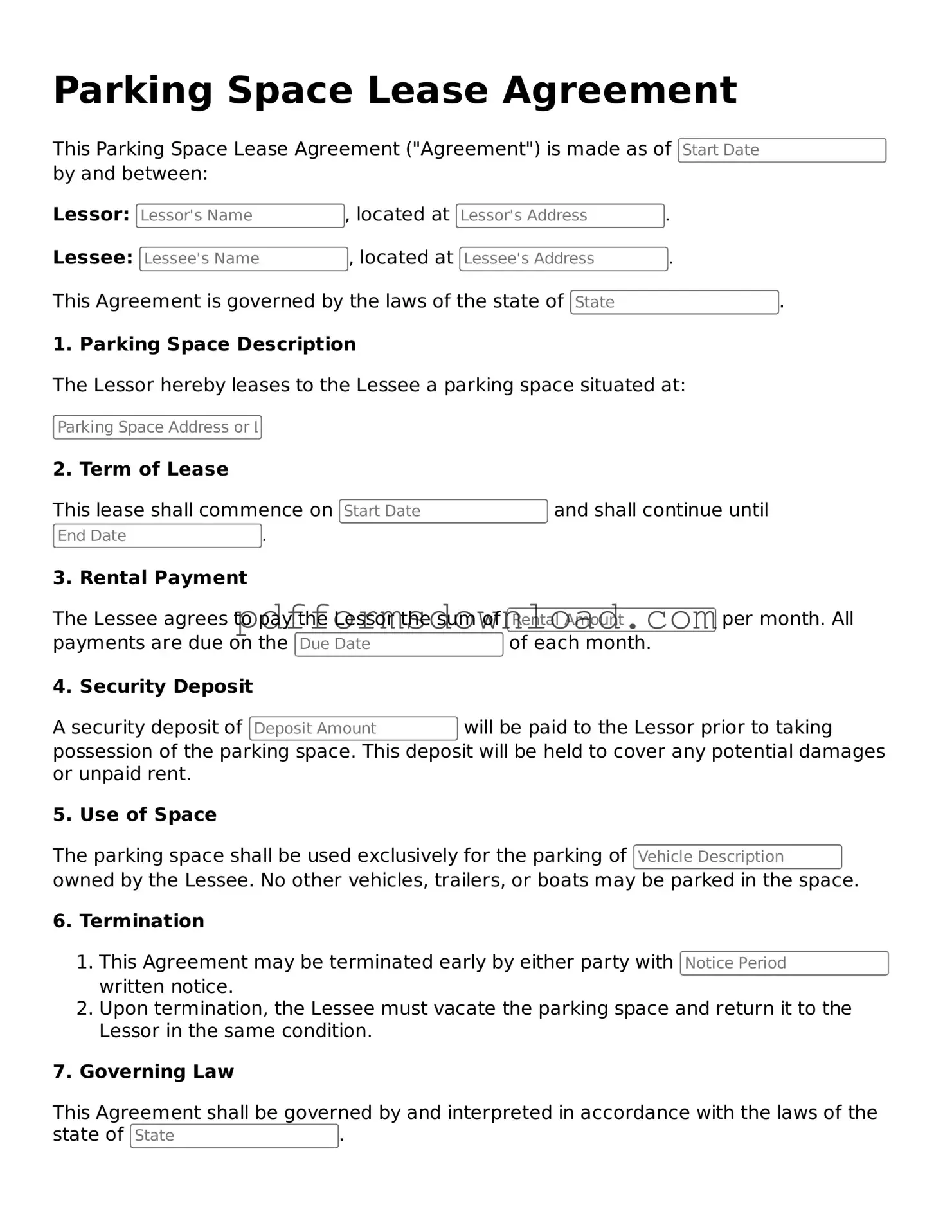What is a Parking Space Lease Agreement?
A Parking Space Lease Agreement is a legal document that outlines the terms and conditions under which a landlord allows a tenant to use a designated parking space. This agreement specifies the duration of the lease, payment terms, and any rules regarding the use of the space.
Who needs a Parking Space Lease Agreement?
Anyone who is renting out a parking space or looking to rent one should have a Parking Space Lease Agreement. This includes property owners, businesses with parking facilities, and individuals needing a guaranteed parking spot.
What information is included in the agreement?
The agreement typically includes the names of the parties involved, the address of the parking space, lease duration, payment details, and any specific rules or restrictions. It may also cover what happens in case of disputes or if either party wants to terminate the lease early.
How long is the lease term?
The lease term can vary based on the agreement between the landlord and tenant. It can be a month-to-month arrangement or a longer-term lease, such as six months or a year. Both parties should agree on the duration before signing.
What are the payment terms?
Payment terms should be clearly stated in the agreement. This includes the amount due, due dates, and acceptable payment methods. It is essential for both parties to understand how and when payments should be made to avoid confusion.
Can the agreement be modified?
Yes, the Parking Space Lease Agreement can be modified if both parties agree to the changes. It’s important to document any modifications in writing and have both parties sign the updated agreement to ensure clarity and enforceability.
What happens if the tenant violates the terms?
If the tenant violates the terms of the agreement, the landlord may have the right to terminate the lease. Specific consequences should be outlined in the agreement, including any notice requirements before termination or penalties for violations.
